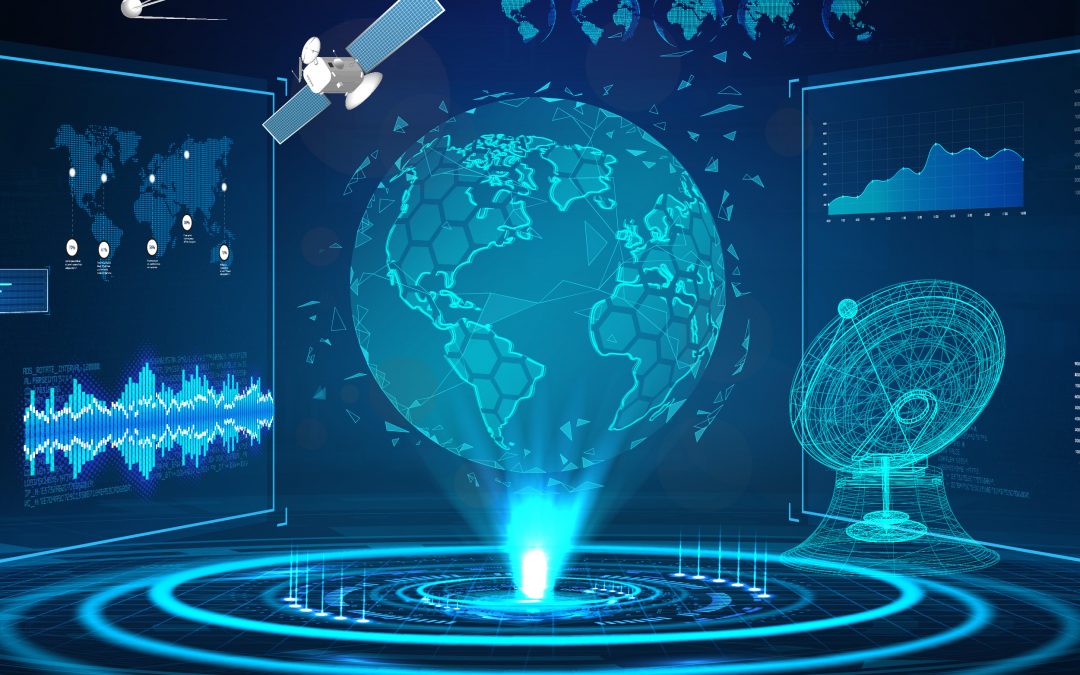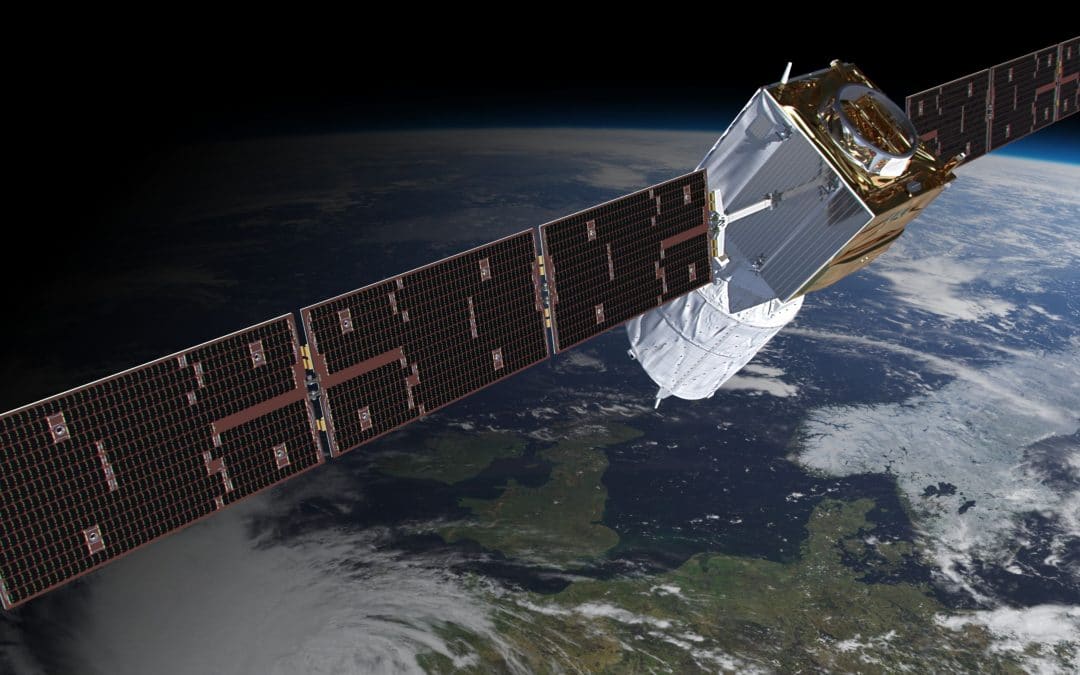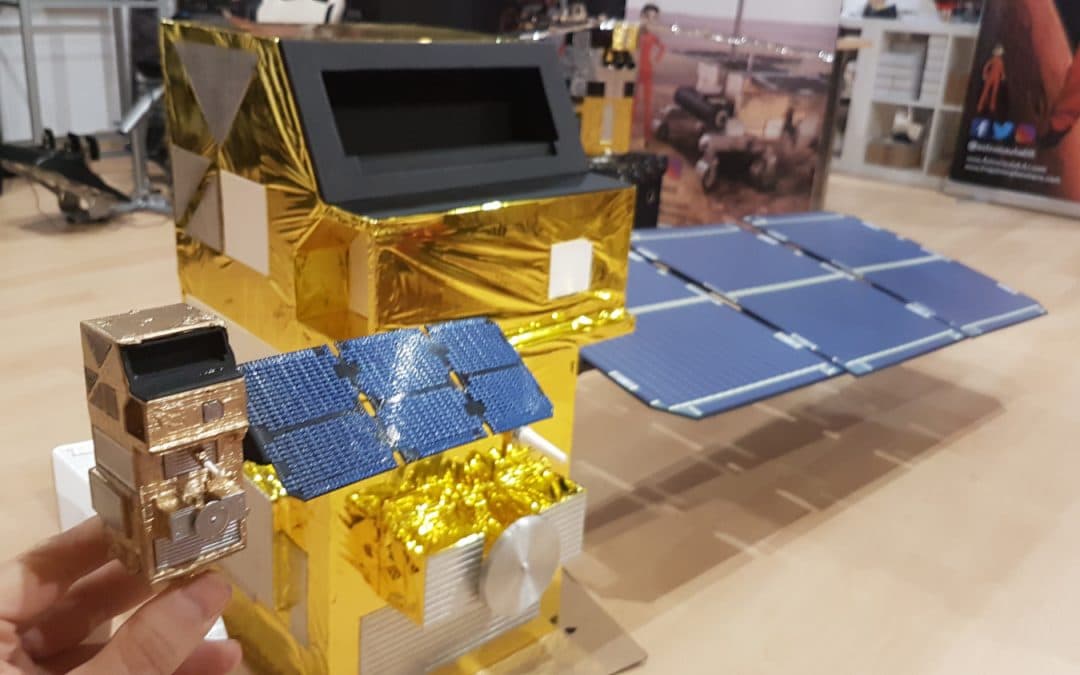
Giant 3D planets for science centers
Nubalo Studios S.L. is an innovative and pioneering company in the field of large-scale 3D printing. Since its founding, they have been working on creating giant prints that impress both in size and in their level of detail.

CryoSat-2 ultra-realistic scaled model
We design and build an ultra-realistic scaled model of the ESA Earth-observation mission CryoSat. ESA (the European Space Agency) is one of the biggest space agencies in the world and, besides hosting lots of space exploration missions throughout the Solar System, it...

“Discover the Universe with Astronaut LiLi” 3rd edition
Investing in education has always been a priority for SpaceRobotics.EU. We love space and science and we believe it's crucial to pass our passion and knowledge to younger generations. With that in mind, back in 2020, we joined forces with the science communicator...

No-glasses-required 3D-Holograms for the Lunar Museum
We keep making the Lunar Museum better and better each day. Our latest update: 3D Holograms that can be seen with no glasses nor additional requirements. At SpaceRobotics.EU, we've been working with the Lunar Museum at Fresnedillas for quite a while now. Back in 2020,...

AR app (now in iOS) update for the Lunar Museum
We keep working along with the Lunar Museum to enhance the visitor's experience through a renewed AR app. As some of you may remember, back in 2020 we completed the renewal of the Lunar Museum in Fresnedillas de la Oliva. Besides advising them about the design of the...

@AstronautaLiLi 2021 Science Communicator of the year
Now that 2021 is coming to an end, it's time to grant a remarkable science communicator the "Science Communicator of the year" prize. On this occasion, we are awarding @AstronautaLiLi, acknowledging her outstanding growth and performance during the pandemic. In fact,...

Aeolus Scaled Model in our new 3D facilities
We start up our brand new 3D facilities to produce a super-detailed Aeolus scaled model! CGI (Computer-Generated Image) of the final 3D model. Aeolus, or, in full, Atmospheric Dynamics Mission-Aeolus (ADM-Aeolus), is a European Space Agency (ESA) Earth observation...

PLD Space Miura – New Scaled Models & 3D-animated AR launch sequence
PLD Space officially presented its Miura 1 rocket and our 3D scaled model came along with it! When modern rockets first appeared back in mid 20th century, it used to take the effort of a whole nation to start a company capable of manufacturing such complex and...

Starship and future on Mars update in Mission Mars VR experience
The Mission: Mars VR Beta experience has only been online for 5 months and has had a great acceptance among the public who love space and especially Mars. After the successful arrivals of Perseverance (American rover) and Zhurong (Chinese rover) to the surface of...

New Virtual Reality game – Save the Earth VR
We are in the year 2085, there is almost no human life left on the planet, our last chance … We started a new development of a space Virtual Reality video game in which we will have a clear objective: "Save the Earth". For this we will need to resort to different...

ESA Cebreros Station complete Virtual Tour
Cebreros Station (also known as DSA 2 or Deep Space Antenna 2) is a European Space Agency, ESTRACK radio antenna station for communication with spacecraft, located about 10 km east of Cebreros and 90 km...

Sentinel 2 – Scaled Model for Museum
The Copernicus Sentinel-2 mission comprises a constellation of two polar-orbiting satellites placed in the same sun-synchronous orbit, phased at 180° to each other. It aims at monitoring variability in land surface conditions, and its wide swath width (290 km) and...

Rover Perseverance 1:10 and Ingenuity full scale
The NASA Perseverance rover will land on Mars in few days. After Curiosity this new six-wheeled Martian rover is tasked with prowling the crater, believed to have been the site that housed a Martian lake billions of years ago, to search for signs of life ancient...

“Mission: Mars” our latest VR experience
At SpaceRobotics.EU we love space, we love new technologies, and we love to share our knowledge and our passion for space sciences. That’s why we’ve created “Mission: Mars”, a VR environment that simulates Mars’ surface and features the latest missions sent by...

Robotic Rosalind Franklin v3 – COVID online demostrator
The European Space Agency (ESA) will launch the robotic rover Rosalind Franklin towards Mars in 2022. As the exploration of Mars prepares for a rebirth, the European rover hones its equipment for the challenges that lie ahead. ExoMars 2020 will deliver a rover and a...

SMOS satellite 1:4 scaled model
Soil Moisture and Ocean Salinity (SMOS) is a satellite which forms part of ESA's Living Planet Programme. It is intended to provide new insights into Earth's water cycle and climate. In addition, it is intended to provide improved weather forecasting and monitoring of...

Sentinel 6 / Jason-CS Scaled Model
About Sentinel 6/Jason-CS Earth observation mission The mission is a constellation of two identical satellites that are launched sequentially. Each satellite carries a radar altimeter to provide high-precision and timely observations of the topography of the global...

ESA DSN scaled model Antena 1:50
The 35-meter antennas of the European Space Agency located in Australia, Argentina and Spain, support missions such as Mars Express, Gaia, BepiColombo, Solar Orbiter, Rosetta and very soon the Rosalind Franklin rover from Mars, Juice, Euclid … , in addition to many...

Lunar Museum – Augmented Reality App
The Lunar Museum has already opened its doors in Fresnedillas de la Oliva (Madrid, Spain), next to NASA's former Manned Space Flight Tracking Station. Its new location hosts a renewed modern exhibition for which we have designed an Augmented Reality App. About the...

New scaled models space shop
We are open for business! After many years of carefully designing, producing and selling scaled models of many space exploration missions, we have finally opened our own online store. Our new space shop For many years now, we have been designing and producing scaled...